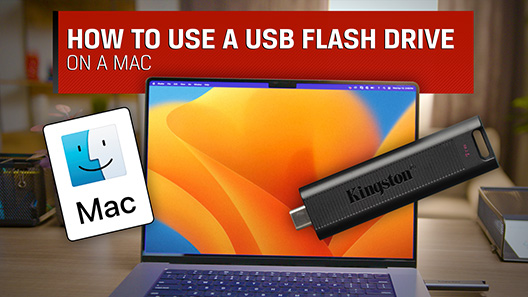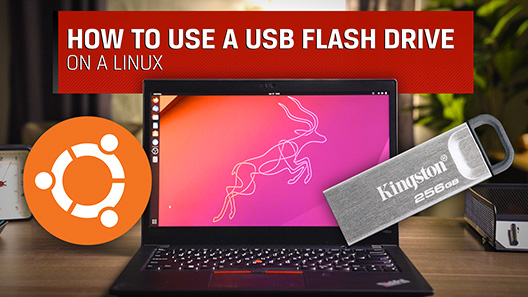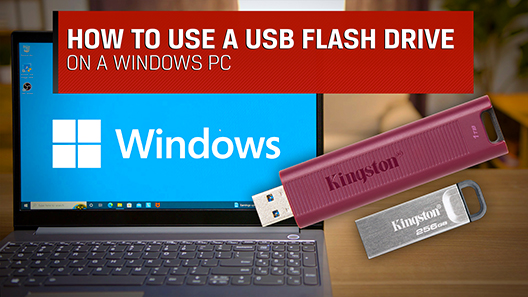
DataTraveler SE9 G2 3.0 USB Flash Drive - Support
Resources
Videos
Frequently Asked Questions
Unfortunately this unit does not have any security or write protection feature. If you receive a write protection message with this drive, check for the following:
- Verify that you are allowed to write to removable storage devices. There may be a security setting in the OS that disables write access to removable storage devices.
- Make sure you have not enabled write protection on the drive by using a third party software.
- If none of the above apply, the drive may be defective. Contact Kingston Technical Support for further assistance.
FAQ: KDT-011411-PW-08
Was this helpful?
To transfer files larger than 4GB, the DataTraveler must have a NTFS or exFAT file system. Unfortunately, the FAT32 file system is not capable of handling a single file larger than 4GB (to be exact, one byte less than 4GB). Follow the steps below to format the DataTraveler with an NTFS File system:
Warning, all data on the DataTraveler will be lost! Please backup the data on the DataTraveler before proceeding.
- Type This PC in the Windows search bar. Right-click on the Kingston drive and select Format.
- Select NTFS or exFAT from the file system drop-down list.
- Select Quick Format as the Format option and click Start.
Note: macOS X has read-only access for drives formatted with NTFS file system. Additionally, some multi-media devices may not support NTFS.
FAQ: KDT-010611-GEN-05
Was this helpful?
This is common for flash storage, whether internal SSD, Flash Card, or external USB storage, and is due in part to a variance in how flash memory vs spinning platter hard drive manufacturers calculate megabyte. Hard drive manufacturers calculate a megabyte (or 1,000x1,000 bytes) as 1,000KBs, whereas the binary calculation for flash-based storage is 1,024KBs.
Example: For a 1TB flash-based storage device, Windows will calculate it as having a capacity of 931.32GB. (1,000,000,000,000÷1,024÷1,024÷1,024=931.32GB).
Furthermore, Kingston reserves some of the listed capacity for formatting (e.g., File Allocation Table) and other functions such as firmware and/or controller-specific information, and thus some of the listed capacity is not available for data storage.
FAQ: KDT-010611-GEN-06
Was this helpful?
FAQ: KGF-022811-GEN-02
Was this helpful?
FAQ: KDT-010611-GEN-14
Was this helpful?
To resolve, make sure to insert the drive directly into the USB ports located on the computer. The USB ports found on the keyboard and some hubs may not supply sufficient power to properly operate the Kingston DataTraveler. Also, go to Finder>Preferences>Sidebar to ensure CD, DVD and iPod and External Disks are checked. If you have an Encrypted USB drive, please make sure you have the latest firmware. If the drive has the latest firmware and still is not recognized or not accessible on macOS, please contact technical support for assistance.
FAQ: KDT-010611-GEN-19
Was this helpful?
When you delete files from a storage drive while the drive is connected to a macOS system, macOS will keep a backup of the deleted files, allowing you to recover files if accidentally deleted. Because of this feature, macOS will also reserve space on the drive in the event that you do recover the deleted files. Therefore, in order to recover the available storage space back to the drive, you will need to empty the macOS Trash Bin, while the drive in question is connected to the masOS computer.
Should this not work, a complete format of the device should be done. Please follow these instructions to format your Kingston drive.
WARNING: Formatting will erase all your data so please make sure you have a copy before proceeding.
- Go to Go > Applications > Utilities and Open Disk Utility.
- Choose your drive from the left panel and then click Erase on the right.
- Select a Volume Format. Select MS-DOS File System or exFAT if you plan to use the drive on macOS and Windows. If used only in a Mac then select Mac OS Extended as the Volume Format.
- Click Erase.
FAQ: KDT-010611-GEN-04
Was this helpful?
This happens if the DataTraveler has been formatted with Microsoft Windows NTFS. To resolve, format the DataTraveler with macOS X using MS-DOS File System.
To format the DataTraveler with macOS, do the following:
- Click on the "GO" option on the menu bar.
- Double-click on "Utilities" (If you do not see Utilities, double-click on Applications and then double-click on the Utilities folder.)
- Double-click on the "Disk Utility" icon.
- On the Disk Utility Dialog box, click once on the Kingston DataTraveler active partition.
Note: There will be two listings for the Data Traveler, the first one is the active partition and the second is the volume label. - Click the erase tab located on the right side of the screen.
- Using the Volume Format drop-down, select "MS-DOS File System" from the list.
- Click Erase.
FAQ: KDT-010611-GEN-08
Was this helpful?
Windows may not recognize the MacOS Extended or Standard file system. To resolve, format the drive in MacOS DOS so that it can be used in both environments.
WARNING: Formatting will erase all of the data on the DataTraveler. Back up your data before proceeding.
- Insert the DataTraveler into the Mac OS X machine and wait for it to mount.
- Click on the "GO" option on the menu bar.
- Double-click on Utilities (If you do not see Utilities, double-click on Applications and then double-click on the Utilities folder.)
- Double-click on the Disk Utility icon.
- On the Disk Utility Dialog box, click once on the Kingston DataTraveler active partition. Note: There will be two listings for the DataTraveler, the first one is the active partition and the second is the volume label.
- Click the erase tab located on the right side of the screen.
- Using the Volume Format drop-down, select "MS-DOS File System" from the list.
- Click Erase.
Be aware MacOS 10.6.5 will support full read and write access to exFAT formatted drives. So formatting the drive using exFAT file system may also resolve this problem. MacOS still has read only access to NTFS formatted drives.
Some devices (MP3 players, digital photo frames, etc) will not read NTFS or exFAT file systems.
Also Windows XP and Vista will require an update in order to access exFAT.
FAQ: KDT-010611-GEN-07
Was this helpful?
Yes, this DataTraveler is supported by Linux as long as you have Linux Kernel 2.6.x and above.
Please note: If the DataTraveler comes with software, it will not function with Linux. Only the drive itself is compatible with Linux.
FAQ: KDT-011411-DRV-02
Was this helpful?
Although it is possible to boot from the DataTraveler, it is not a feature Kingston supports.These drives are intended as storage devices.
FAQ: KTD-082913-GEN-27
Was this helpful?



